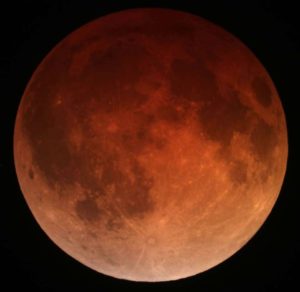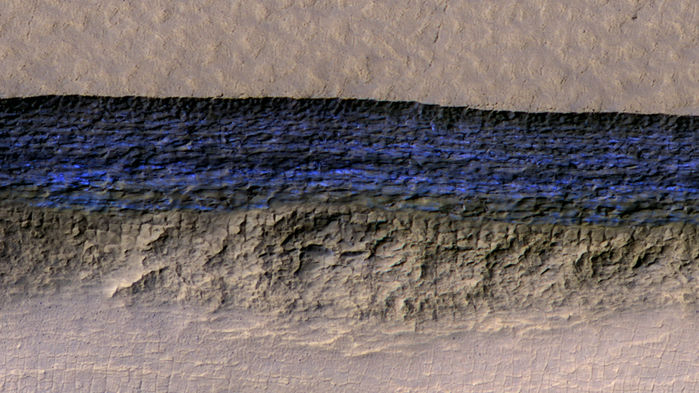Archives
All posts for the month January, 2018

Total lunar eclipse on 2015 Sep 27. From wikipedia.
As a follow-on to our spectacular total solar eclipse last August, North America will be treated to a total lunar eclipse early on Wednesday (Jan 31) morning. The eclipse will start about 5:51am MST and will end just after 7a. No special equipment needed to observe the eclipse. If you can see the Moon, you’ll be able to see the eclipse.
A lunar eclipse occurs when the Moon passes through the Earth’s shadow (as opposed to a solar eclipse, when the Earth passes through the Moon’s shadow). Because red light from the Sun is refracted around the Earth by the atmosphere, during eclipse the Moon can appear murky red (similar to why sunsets appear red).
In fact, Wednesday’s eclipse is triply special — not only will the Moon pass through Earth’s shadow. It will also pass near perigee (the closest point in its orbit to the Earth), making the Moon appear especially large and bright in the sky (about 14% larger and 30% brighter). It will also be the second full moon in the month of January, making it an unofficial blue moon.
These three celestial events aren’t all that rare individually — lunar eclipses happen roughly every six months, supermoons happen every few months, and blue moons happen every two to three years. The confluence of all three is also not all that rare — the last time was in Dec 1982. So while Wednesday’s sky show may be impressive, it will not be the harbinger of doom claimed by some false prophets.
For Boise, though, another more mundane event may spell doom — we’re slated for clouds that morning, and no sky = no eclipse.

Enhanced color image of the thick bands of ice (blue) have been spotted in steep cliff faces. NASA/JPL/UNIVERSITY OF ARIZONA/USGS
At last week’s journal club, we discussed a recent paper that reports the discovery of ancient glaciers on Mars.
Dr. Colin Dundas of the USGS’s Astrogeology Group based in Flagstaff spotted these buried ice cliffs during his daily scan of the regularly collected images taken by the HiRISE camera onboard Mars Reconnaissance Orbiter (MRO) currently circling Mars. (The camera itself is pretty stunning – it produces orbital images of Mars at high enough resolution that you could almost read the headline on a martian newspaper, assuming they had newspapers.)
In scanning through the daily haul of images, Dundas spotted striking blue strata in the walls of steep cliffs just a few meters below the dusty martian surface that sure look like water ice. Follow-up spectral observations by CRISM instrument on MRO confirmed the cliffs were indeed almost completely pure water ice, with no more than with less than 1% dust.
Ice on Mars isn’t particularly surprising – astronomers have known (or at least suspected) there is water ice at the poles of Mars for more than 100 years, and a mountain of data has indicated vast stores of ice in Mars’ subsurface, especially near the poles. But key questions about this ice have persisted: Was the ice recently deposited, and how much dust is mixed in?
Since these newly discovered cliffs are so pure, though, Dundas and colleagues suggest that they were probably deposited as snow before being buried. Mars’ current climate isn’t really conducive to water snow, and so the ice was probably deposited millions of years ago, when Mars’ axis had a very different tilt resulting a very different climate from now. The fact that the ice cliffs occur much nearer to the equator than might be expected also points to formation during a previous climatic epoch.
The implications of these cliffs for Mars’ climate history aren’t entirely clear, but their importance for exploration of Mars is hard to overstate. As Dundas et al. say in their paper, the cliffs would very likely serve as a resource for future human visitors. The water could be combined with gases in the martian atmosphere to make rocket propellent and even oxygen.
So there are large deposits of ice in the subsurface of Mars? Maybe “Total Recall” wasn’t so much science fiction as science prophesy.